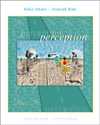These last two chapters have merely scratched the surface of one of perception's most highly developed areas of research, hearing. Acoustics and hearing were among the first fields of study to develop quantitative measures for describing their subject. These developments date back to the early Greeks, who showed experimentally that pitch was related to the length of a vibrating string. Hearing researchers were also among the first to come up with experimental techniques (such as direct scaling) for measuring perceptual reactions to sensory stimulation. These measurements were necessary in order to know what acoustic events actually sound like in terms of loudness, pitch, and so forth. Contemporary research in hearing has made possible a very sophisticated understanding of the initial mechanical and neural events that eventually culminate in auditory perception. Still many of hearing's mysteries remain to be solved, including that very special case of hearing, speech perception.
We are now ready to consider a trio of senses, touch, taste, and smell, which play subtle but important roles in our everyday lives. |



 2002 McGraw-Hill Higher Education
2002 McGraw-Hill Higher Education

 2002 McGraw-Hill Higher Education
2002 McGraw-Hill Higher Education